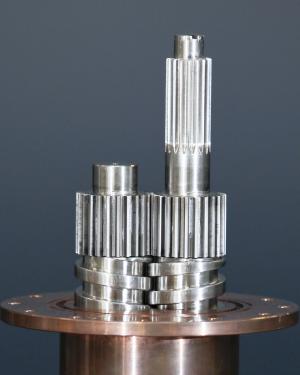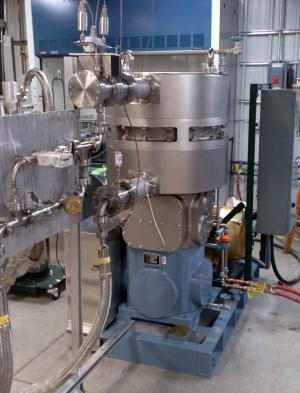Multiple pellet injectors will be installed on the ITER Tokamak, with up to two injectors at each of three locations on the machine. Some locations will be used more for fuelling while others will be deployed for lessening the impact of plasma instabilities known as edge localized modes (ELMs) by a technique called pellet ELM pacing. The pellet injector can also insert impurity pellets made of argon, neon, or nitrogen into the Tokamak for plasma impurity studies. The pellet injectors must also be able to handle tritium, a radioactive isotope of hydrogen with a half-life of about 12 years, safely.
"There is a 30-year technology development history at ORNL behind the ITER pellet injection design," says Lyttle.
Under testing now is a 1:5 scale pellet twin-screw extruder. "We do plan to build a full-scale prototype and test it at the Spallation Neutron Source cryogenic facility at ORNL, where we have access to a supply of supercritical helium. Supercritical helium at only 5 degrees above absolute zero is used as the coolant to form the pellet ice and we are lucky to have one of the few facilities in the world that can supply our needs here at ORNL," says Lyttle.
Other key upcoming activities for researchers and engineers are tests of a propellant gas recirculation loop for the pellet injection system using a tritium-compatible vacuum pump. The recirculation loop supplies the pressurized propellant gas and assures that the gas used to accelerate the pellets is not injected into the vacuum chamber of the ITER Tokamak during the fuelling process.
"Initial tests on the pumping speed look promising," observes Lyttle. This pump has been tested with helium gas and soon will be tested with hydrogen gas. Ultimately, the pump and loop will undergo a multi-year "lifetime" test to assure its readiness for the ITER pellet injection system, where 99.9% availability is required.
For the original article and more news from US ITER, click here.




